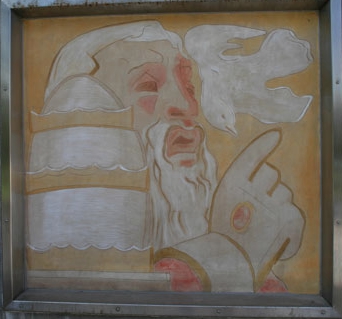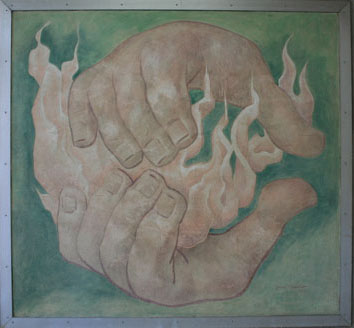Charlot Frescoes: O'Laughlin's Hidden Treasure

Saint Mary’s College and the South Bend community have been widely recognized in the world of Fine Arts for many years. The college’s artistic influence traces back to nearly eight decades ago, when our very own Sister Madeleva brought the campus and its students to the forefront of the fine arts community. The remarkable architecture detailed with a timeless, creative touch makes Saint Mary’s a historically rich campus. One building, specifically, is adorned with countless pieces of art which surely do not go unnoticed.
During the late fifties, the Midwest became a small hub for aspiring artists and other talent. South Bend, specifically, created a niche driven by Sister Madeleva, to promote the arts across the community. She often brought in entertainment to kickstart this movement, such as the famous Hellen Hayes. O’Laughlin Auditorium quickly became one of the most popular theatres in the Midwest.
O’Laughlin Auditorium is designed with multiple works of fine art ranging from complex mosaics to large murals, and of course, the famous frescoes. The fresco paintings located outside of the main entrance of O’Laughlin Auditorium, are without doubt, the most historically renowned art piece Saint Mary’s has to offer. The credit for these colorful and majestic paintings lies in the hands of famous French artist, Jean Charlot.
French-born Charlot was raised in Mexico City with his mother who studied and produced a great deal of art herself. He was considerably influenced by the Mexican culture surrounding him and portrayed this through his art. He took part in the Mexican mural movement during the 1920’s and even influenced artists like Diego Rivera, another remarkable creator. In 1929, Charlot moved to the United States and began teaching at small art schools and eventually, well renowned colleges.
In the midst of Sister Madeleva’s efforts to raise art awareness within the community, Charlot had conveniently been working at the University of Notre Dame. In 1956, Sister Madaleva requested the frescoes to be made by Charlot. The frescoes themselves depict twelve Saints of the Arts, which were set in separate frames and placed vertically within the outside walls of O’Laughlin.
Frescoes are one of the more difficult forms of classical painting styles and the process is quite tedious. The process involves working at a rather fast pace in order to secure the colors in the cement medium. At some point during Charlot’s work, a mistake was made, causing the paintings to fade over time. Thankfully, Sister Madeleva’s efforts to filter in young talents and place emphasis on the arts, has had lasting effects on the students and the community. In 2009, the frescoes were restored by the Chicago Conservation Center. As years go on, the frescoes will need to be restored more frequently. It is our hope at Saint Mary’s to include our talented art students in any future restoration projects.
The only fresco painting in its original condition hangs magnificently inside the entrance of the Little Theatre in the Moreau Center for the Arts building. The gorgeous and powerful piece depicting man holding fire, is a personal favorite of our very own Director of Campus and Community Events, Richard Baxter. “It truly represents what art is” says Baxter. The famous Charot frescoes are only a portion of the incredible art forms admired throughout campus. It is important to acknowledge the ways art and its creators have influenced our culture here at Saint Mary’s. In the hopes of Sister Madeleva, the fine arts will continue to have a dynamic impact on our students and our community.

Jackie Cunningham '22 is a Business Marketing major from Tinley Park, IL.
